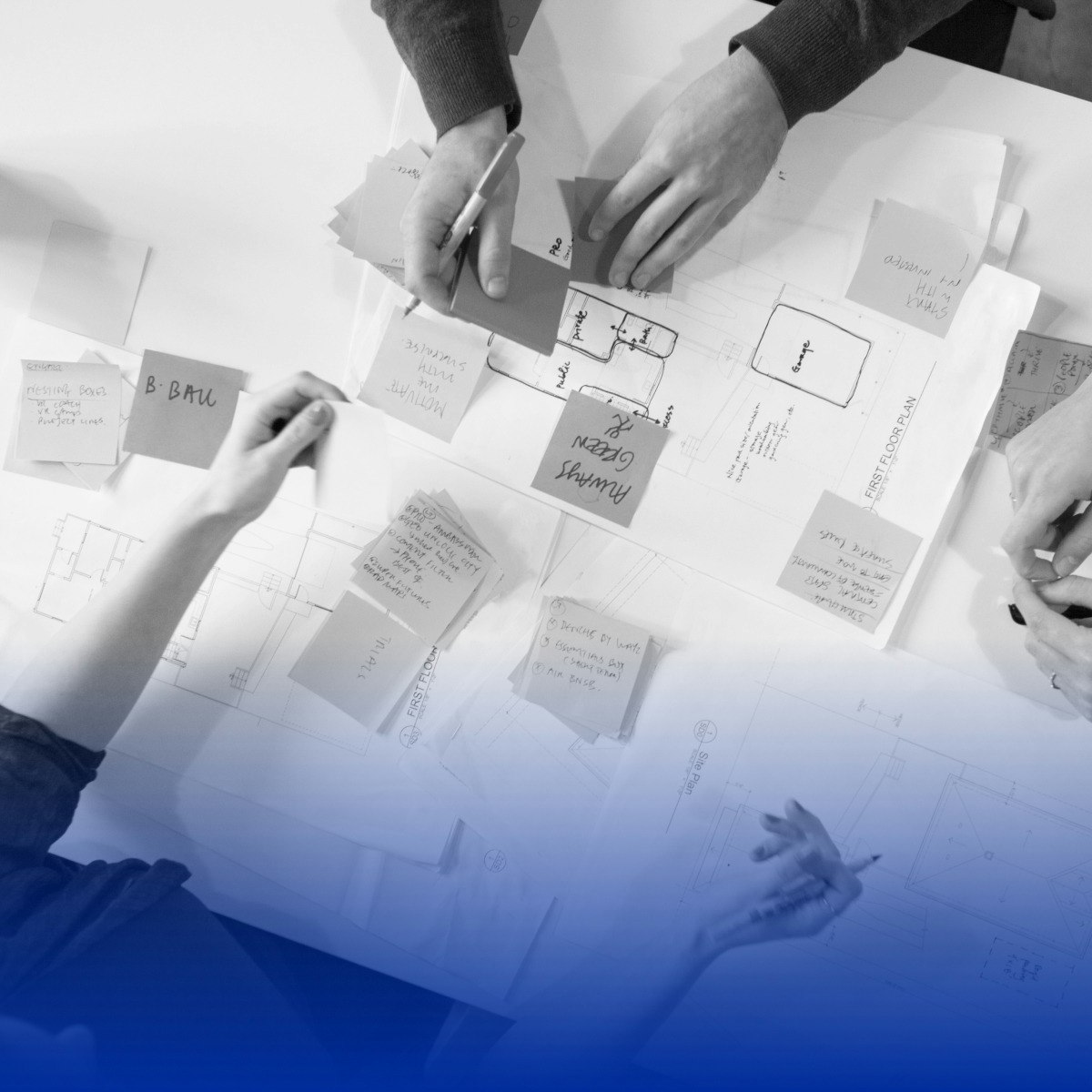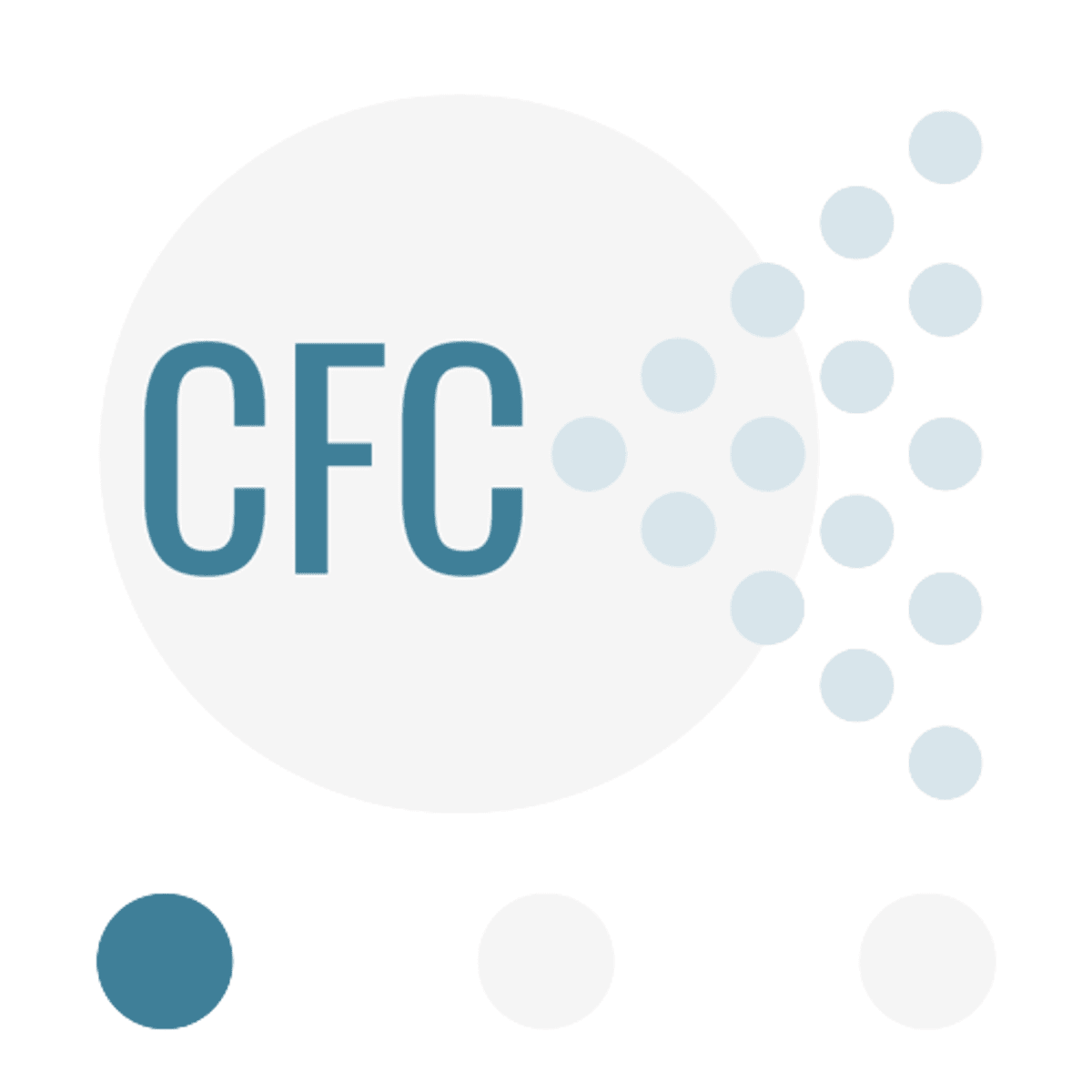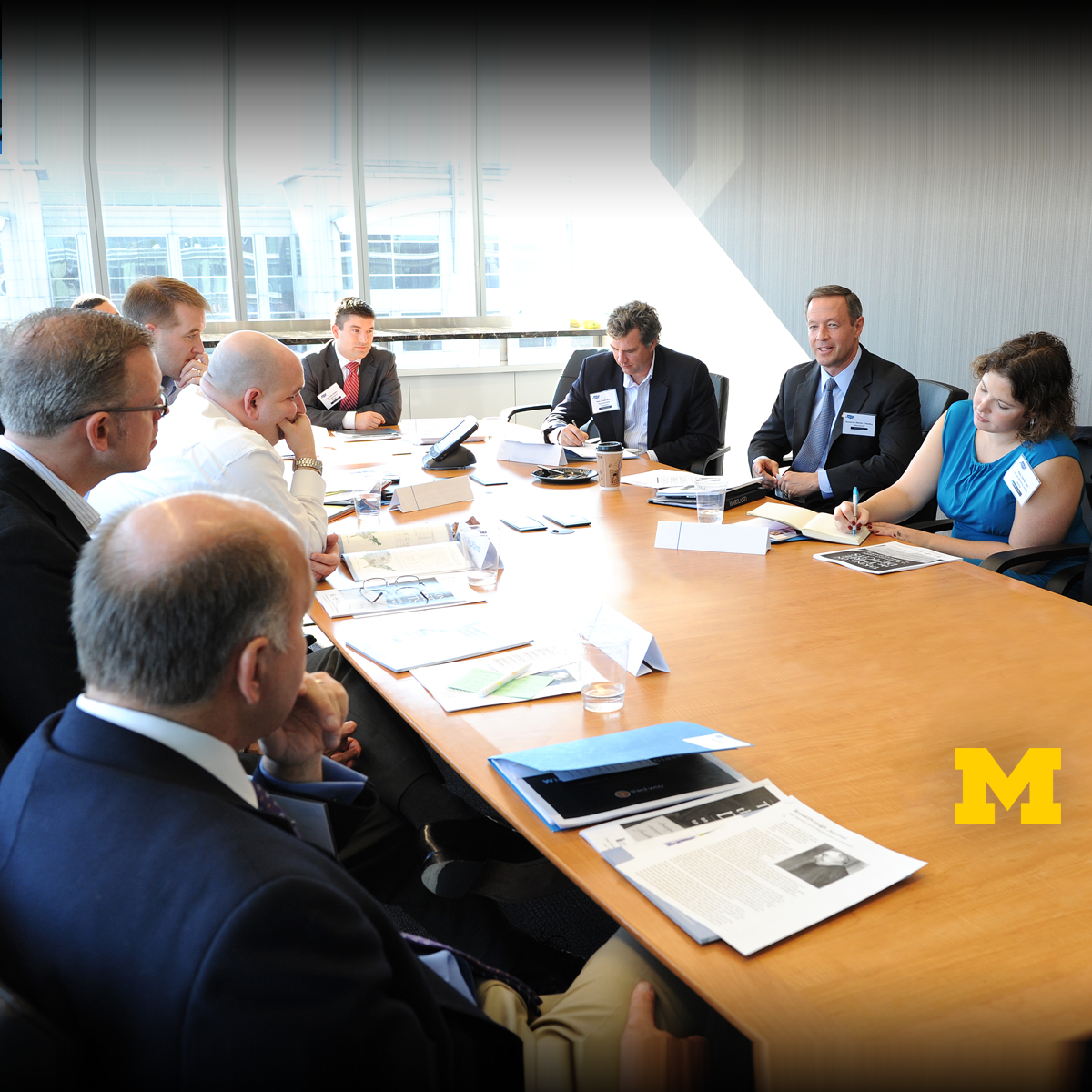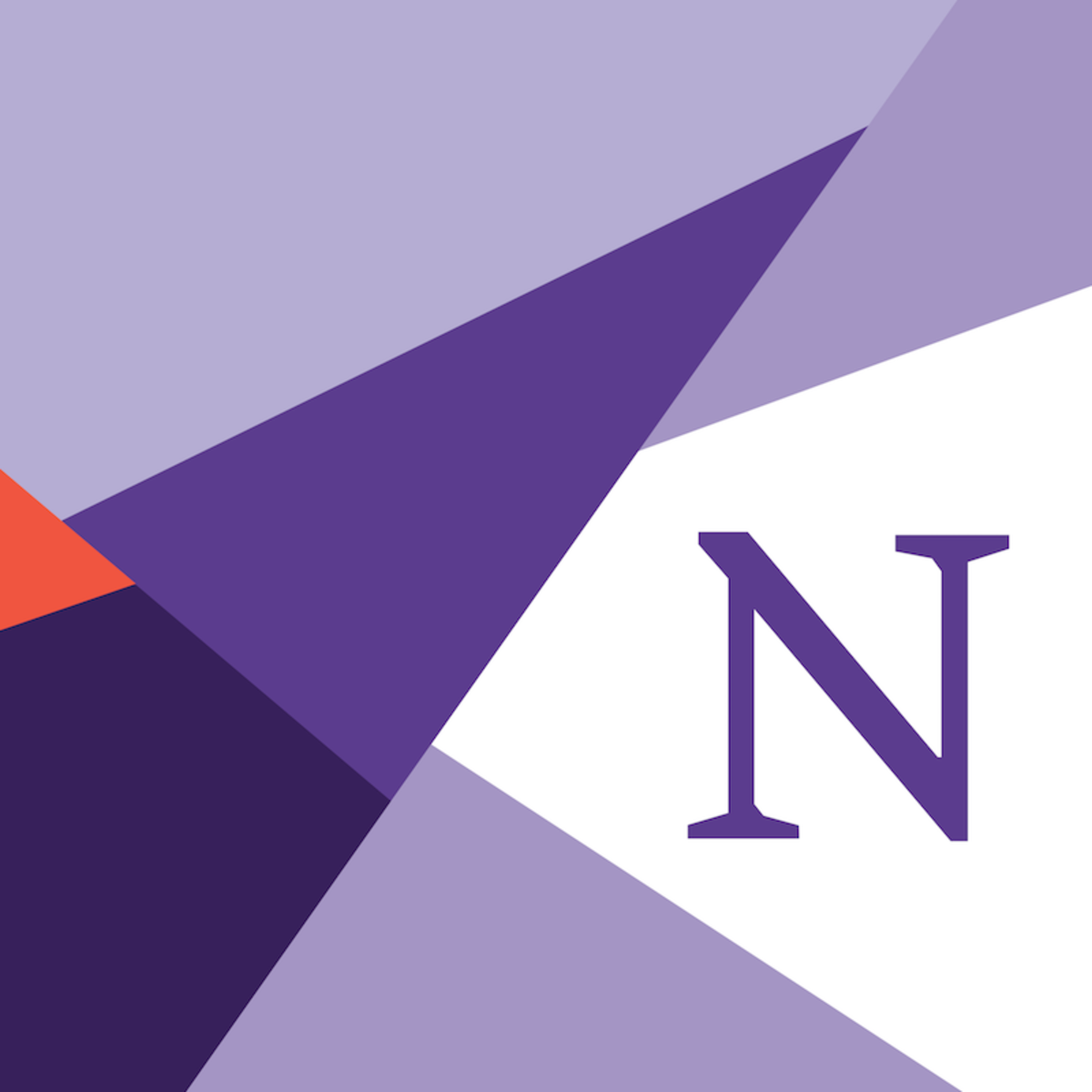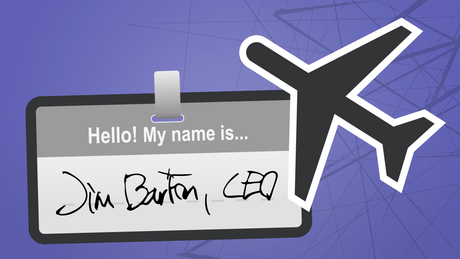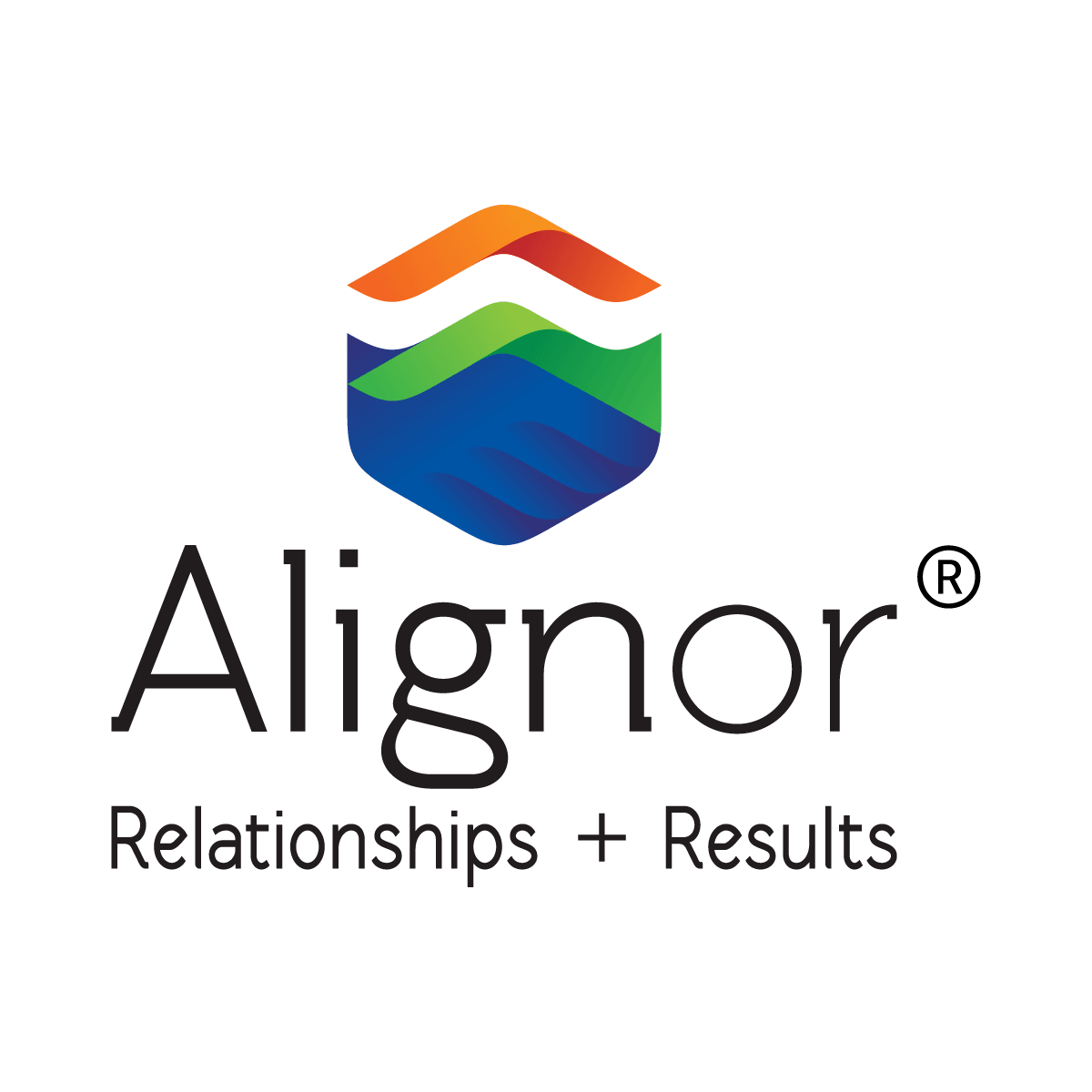Collaboration
Understanding Collaboration: Working Together Effectively
Collaboration is the process where two or more people, teams, or organizations work together to complete a task or achieve a shared goal. At its core, it involves combining knowledge, skills, and resources to produce outcomes that are often greater than what individuals could achieve alone. This process requires coordination, communication, and a mutual commitment to the objective, whether it's solving a complex problem, creating something new, or delivering a service.
The power of collaboration lies in its ability to foster innovation and efficiency. By bringing diverse perspectives and expertise together, teams can generate more creative solutions and identify potential pitfalls more readily. Furthermore, effective collaboration can significantly enhance productivity, streamline workflows, and build stronger working relationships, making it a vital element in virtually every field of human endeavor, from scientific research and business development to artistic creation and community projects.
The Evolution of Collaboration
Understanding how collaboration has changed over time provides valuable context for its current importance. From ancient hunting parties to modern global enterprises, the ways humans work together have continuously adapted to new tools, societal structures, and challenges.
From Guilds to Assembly Lines
In pre-industrial societies, collaboration often took the form of communal work within families or villages, such as farming or building. Craftsmanship flourished through guilds, where masters, journeymen, and apprentices worked together, sharing knowledge and upholding standards within their trade. This model emphasized skill transmission and collective quality control.
The Industrial Revolution brought about significant changes. Large factories emerged, necessitating new forms of coordination among workers performing specialized tasks on assembly lines. While this increased efficiency for mass production, collaboration often became more hierarchical and segmented. Communication flowed vertically, and individual contributions were standardized within a larger, centrally managed process.
The late 20th century saw a shift back towards more team-based work, influenced by management theories emphasizing employee involvement and quality circles. The focus began moving from purely process-driven coordination to fostering teamwork and shared problem-solving, recognizing the value of collective intelligence even within structured industrial settings.
The Digital Revolution and Modern Trends
The advent of the internet and digital technologies dramatically reshaped collaboration. Geographical barriers diminished, enabling the rise of distributed teams and global partnerships. Email, instant messaging, shared documents, and video conferencing became standard tools, facilitating real-time and asynchronous communication across distances.
Today, collaboration is increasingly digital, dynamic, and data-driven. Cloud-based platforms allow seamless sharing and co-creation of work. Agile methodologies emphasize iterative development and close collaboration within cross-functional teams. Furthermore, the rise of remote and hybrid work models, accelerated by events like the COVID-19 pandemic, has made proficiency in virtual collaboration tools and techniques indispensable. A McKinsey report highlights the persistence of remote work and its implications for collaborative practices.
Emerging trends include the integration of Artificial Intelligence (AI) to assist teams by automating tasks, providing insights, or even mediating discussions. Virtual Reality (VR) and Augmented Reality (AR) technologies are also creating new possibilities for immersive shared workspaces, aiming to replicate the richness of in-person interaction in digital environments. The focus remains on leveraging technology not just to connect people, but to enhance the quality and effectiveness of their joint efforts.
Understanding version control is crucial in many collaborative digital projects, especially software development. These courses introduce the concepts.
Core Principles of Effective Collaboration
While tools and contexts evolve, the fundamental principles underpinning successful collaboration remain consistent. Mastering these principles is key to building high-performing teams and achieving shared objectives, whether in academic settings, professional environments, or community initiatives.
Clear Communication and Active Listening
Effective communication is the lifeblood of collaboration. This involves not only clearly articulating ideas, expectations, and feedback but also actively listening to understand others' perspectives. For diverse teams, clarity is paramount – avoiding jargon, confirming understanding, and choosing appropriate communication channels (e.g., email for documentation, chat for quick questions, video calls for nuanced discussions) are essential.
Active listening goes beyond simply hearing words; it involves paying attention, showing genuine interest, asking clarifying questions, and paraphrasing to ensure mutual understanding. It builds trust and ensures all voices are heard, leading to more comprehensive solutions and fewer misunderstandings. In virtual settings, this requires extra effort to interpret non-verbal cues or their absence.
Developing strong communication skills, both written and verbal, is crucial. This includes adapting your style for different audiences and contexts, providing constructive feedback, and facilitating open dialogue where team members feel safe to express ideas and concerns.
These courses focus on the soft skills needed for effective interaction and collaboration.
Managing Conflict Constructively
Disagreements are natural, even inevitable, when passionate people work together. Effective collaboration doesn't mean avoiding conflict, but rather managing it constructively. Unaddressed conflict can fester, damaging trust and hindering progress, while well-managed disagreements can spark creativity and lead to stronger outcomes.
Frameworks for conflict resolution often involve identifying the root cause of the disagreement (e.g., differing goals, values, communication styles, or resource constraints), encouraging open and respectful dialogue about each party's needs and perspectives, brainstorming potential solutions, and agreeing on a path forward. Techniques like mediation or facilitated discussion can be helpful.
Key skills include emotional intelligence (understanding and managing your own and others' emotions), empathy, and the ability to separate people from the problem. Focusing on shared interests rather than fixed positions can help find common ground. Establishing clear team norms for handling disagreements proactively can also prevent minor issues from escalating.
This course specifically addresses generational differences, a common source of workplace friction.
Aligning Goals and Defining Roles
For collaboration to succeed, everyone involved must have a clear understanding of the overarching goals and how their individual contributions fit into the bigger picture. Goal alignment ensures that efforts are synchronized and directed towards the same outcome, preventing wasted work or conflicting priorities.
Techniques like SMART (Specific, Measurable, Achievable, Relevant, Time-bound) goals can help define objectives clearly. Regularly revisiting and communicating progress towards these goals keeps the team focused and motivated. Breaking down large goals into smaller, manageable tasks is also crucial.
Clearly defined roles and responsibilities are equally important. Knowing who is responsible for what prevents duplication of effort and ensures accountability. This doesn't necessarily mean rigid hierarchies; roles can be flexible and adapt based on project needs, but clarity at any given time is key. Tools like RACI charts (Responsible, Accountable, Consulted, Informed) can help map out responsibilities within a team or project.
Building and Maintaining Trust
Trust is the foundation upon which all effective collaboration is built. Without trust, team members may hesitate to share ideas, admit mistakes, rely on others, or engage in constructive conflict. Building trust takes time and conscious effort.
Trust is fostered through reliability (following through on commitments), competence (demonstrating relevant skills and knowledge), integrity (acting ethically and honestly), and benevolence (showing genuine care and support for colleagues). Consistent, transparent communication and predictable behavior are essential.
Methodologies for building trust include creating opportunities for informal interaction, promoting psychological safety (where members feel safe to take interpersonal risks), celebrating successes together, and addressing breaches of trust promptly and fairly. Leaders play a critical role in modeling trustworthy behavior and creating a trusting environment.
These books offer insights into interpersonal dynamics and effective teamwork, which are crucial for building trust and collaboration.
Collaboration Tools and Technologies
In the modern workplace, technology plays a central role in enabling and enhancing collaboration, especially for distributed or hybrid teams. Choosing and effectively utilizing the right tools can significantly impact a team's productivity, communication flow, and overall success.
Synchronous vs. Asynchronous Tools
Collaboration tools can be broadly categorized based on whether they facilitate real-time (synchronous) or time-shifted (asynchronous) interaction. Synchronous tools, like video conferencing (Zoom, Google Meet, Microsoft Teams calls), instant messaging (Slack, Teams chat), and collaborative whiteboards (Miro, Mural), are ideal for discussions requiring immediate feedback, brainstorming sessions, or urgent problem-solving.
Asynchronous tools, such as email, project management platforms (Asana, Trello, Jira), document sharing systems (Google Drive, SharePoint, Dropbox), and discussion forums, allow individuals to contribute at their own pace and time. These are better suited for tasks that don't require instant responses, detailed documentation, or accommodating different time zones and work schedules. Balancing both types effectively is key; overuse of synchronous tools can lead to meeting fatigue, while relying solely on asynchronous methods might slow down decision-making.
Many platforms offer features supporting both modes. Understanding the strengths of each type helps teams choose the most appropriate tool for a given task or communication need, optimizing efficiency and respecting individual workflows.
These courses cover popular collaboration platforms and tools used in various industries.
Security and Data Privacy
As collaboration increasingly relies on digital platforms and shared data, security becomes a critical consideration. Organizations must ensure that the tools they use protect sensitive information from unauthorized access, breaches, or accidental disclosure. This involves evaluating the security features of platforms, such as encryption, access controls, and compliance certifications.
Team members also need training on secure collaboration practices, including using strong passwords, recognizing phishing attempts, understanding data sharing policies, and using approved tools for sensitive information. Data privacy regulations (like GDPR or CCPA) add another layer of complexity, requiring careful management of personal data within collaborative workflows.
Choosing tools with robust administrative controls allows organizations to manage user permissions effectively, track activity, and enforce security policies. Regularly reviewing and updating security protocols is essential as threats evolve. Balancing ease of collaboration with necessary security measures is an ongoing challenge for most organizations.
Emerging Collaboration Technologies
The landscape of collaboration technology is constantly evolving. Artificial Intelligence (AI) is being integrated into tools to automate tasks like meeting summaries, suggest relevant information, or even analyze team communication patterns for potential issues. AI assistants might soon play a more active role in facilitating discussions or managing project workflows.
Virtual Reality (VR) and Augmented Reality (AR) offer possibilities for more immersive remote collaboration. VR workspaces aim to recreate the feeling of being in the same room, potentially enhancing non-verbal communication and shared spatial understanding for tasks like design reviews or training simulations. While still nascent for widespread business use, these technologies signal a potential future where digital collaboration feels more natural and engaging.
Other developments include enhanced integration between different tools, creating more unified digital workplaces, and platforms focused specifically on supporting complex, cross-functional projects or fostering innovation within large organizations. Staying aware of these emerging technologies helps organizations anticipate future needs and opportunities for improving collaboration.
These resources provide insights into tools and practices relevant to modern collaboration.
Cross-Disciplinary Collaboration
Bringing together experts from different fields – such as engineers working with designers, scientists collaborating with policymakers, or marketers partnering with data analysts – can lead to groundbreaking innovations and holistic solutions. However, cross-disciplinary collaboration presents unique challenges alongside its significant rewards.
Bridging Disciplinary Divides
One of the primary challenges in cross-disciplinary work is overcoming differences in language, methodologies, and perspectives. Each discipline often has its own jargon, assumptions, and ways of approaching problems. Effective communication requires translating concepts, actively seeking clarification, and finding common ground.
Successful interdisciplinary projects often involve dedicated "boundary spanners" – individuals skilled at understanding multiple perspectives and facilitating communication between different groups. Establishing shared goals and a common project vision early on is crucial. Creating shared artifacts, like models or prototypes that different disciplines can interact with, can also help bridge understanding gaps.
Patience and mutual respect are vital. Team members must be willing to learn from each other and appreciate the value that different disciplinary approaches bring. Recognizing and navigating these differences is key to unlocking the synergistic potential of cross-disciplinary teams.
This course provides fundamental concepts for working across different functional areas.
Case Studies and Success Factors
Numerous examples highlight the power of cross-disciplinary collaboration. The development of smartphones involved engineers, software developers, designers, and marketers working closely together. Advances in medical treatments often result from collaborations between biologists, chemists, clinicians, and engineers. Urban planning projects require input from architects, sociologists, environmental scientists, and economists.
Key success factors often include strong leadership that champions the interdisciplinary approach, dedicated funding structures that support cross-field work (which can sometimes fall between traditional funding silos), and physical or virtual spaces designed to encourage interaction between different groups. Clear project management and defined processes for integrating diverse inputs are also essential.
Learning from both successful and unsuccessful case studies provides valuable lessons on structuring and managing these complex collaborations. Understanding the common pitfalls, such as communication breakdowns or conflicts arising from differing priorities, helps teams anticipate and mitigate potential problems.
Navigating Funding and Institutional Structures
Academic and research environments can sometimes present structural barriers to cross-disciplinary collaboration. Traditional university departments and funding agencies are often organized along disciplinary lines, which can make it challenging to secure resources or recognition for interdisciplinary work.
Initiatives promoting cross-disciplinary research often require specific funding programs designed to bridge these gaps. Institutions may create interdisciplinary research centers or institutes to foster collaboration outside traditional departmental structures. Navigating these structures requires understanding the institutional landscape and advocating for the value of the collaborative approach.
Similarly, in industry, organizational silos can hinder cross-functional teamwork. Breaking down these barriers often requires explicit support from senior leadership and changes to performance metrics and incentives to reward collaborative efforts rather than solely individual or departmental achievements.
For those interested in the intersection of knowledge management and collaboration across disciplines, this book might be insightful.
Career Progression Through Collaboration
In today's interconnected world, the ability to collaborate effectively is no longer just a desirable soft skill – it's a core competency highly valued by employers across nearly all industries. Strong collaboration skills can significantly enhance career progression, opening doors to leadership opportunities and roles that require coordinating diverse teams.
Collaboration-Centric Roles
While collaboration is important in almost any role, some positions explicitly center around facilitating teamwork and coordinating efforts. Project Managers, for instance, are responsible for guiding teams through complex tasks, managing resources, and ensuring clear communication. Program Managers oversee multiple related projects, requiring extensive coordination across different teams and stakeholders.
Other roles like Scrum Masters in Agile environments focus specifically on facilitating team processes and removing impediments to collaboration. Consultants often work with client teams, requiring strong collaborative skills to understand needs and implement solutions. Team Leaders and Managers at all levels rely heavily on collaboration to guide their teams, foster a positive work environment, and achieve collective goals.
Even in technical roles, the ability to collaborate effectively with peers, product managers, designers, and clients is increasingly critical for success. As projects become more complex and integrated, individual contributors who can work well with others often stand out.
Exploring these career paths can provide direction for those who excel at and enjoy collaborative work.
Building a Collaboration Portfolio
Demonstrating collaboration skills to potential employers requires more than just listing "teamwork" on a resume. Building a portfolio or collection of experiences that showcase your ability to work effectively with others is crucial. This might involve highlighting successful team projects you contributed to, detailing your specific role and how you facilitated collaboration.
Quantifiable results are powerful. For example, describing how your collaborative efforts led to a project being completed ahead of schedule, under budget, or with higher quality can be very effective. Mentioning specific tools or methodologies you used (e.g., Agile, specific project management software, conflict resolution techniques) adds credibility.
Consider seeking out opportunities to lead team initiatives, mentor junior colleagues, or participate in cross-functional projects. Volunteering for roles that require coordination, such as organizing events or leading committees, can also provide valuable experience. Documenting these experiences and being prepared to discuss them in detail during interviews is key.
These courses cover leadership and teamwork, essential for career growth in collaborative environments.
Leadership Through Collaboration
Effective collaboration is often a prerequisite for moving into leadership positions. Leaders who can foster a collaborative environment, build trust, align diverse teams towards common goals, and navigate conflict constructively are highly sought after. Modern leadership often emphasizes influence and facilitation over command-and-control.
Developing leadership skills involves honing your abilities in communication, empathy, strategic thinking, and decision-making within a team context. Learning how to empower others, delegate effectively, and provide constructive feedback are crucial aspects of collaborative leadership. Understanding team dynamics and adapting your leadership style to different situations and personalities is also important.
Pursuing leadership roles, even informal ones within projects or teams, provides opportunities to practice and demonstrate these skills. Mentorship from experienced leaders can also be invaluable. Recognizing that leadership is often about enabling the success of others through collaboration is a key mindset shift for career advancement in team-based environments.
These resources delve into leadership and related skills crucial for advancement.
Formal Education in Collaboration
While collaboration skills are often developed through experience, formal education can provide structured learning, theoretical frameworks, and recognized credentials. Universities and colleges offer various pathways for students interested in deepening their understanding and expertise in collaboration, teamwork, and related fields.
Degree Programs and Specializations
Fields like Organizational Behavior, Industrial-Organizational Psychology, Management, and Communications often include significant coursework focused on team dynamics, group processes, leadership, and organizational structures. Some universities may offer specific concentrations or specializations in areas like conflict resolution, negotiation, or team leadership within broader business or social science degrees.
Programs in Project Management explicitly teach methodologies and tools for coordinating team efforts towards specific goals. Fields like Human Resources Management also cover aspects of team building, employee relations, and organizational development, all closely related to collaboration.
Students pursuing degrees in almost any field, from engineering and science to arts and humanities, will likely encounter collaborative projects as part of their curriculum, providing practical experience alongside theoretical learning. Seeking out programs known for their emphasis on team-based learning can be beneficial.
Research and Experiential Learning
Many degree programs incorporate laboratory work, fieldwork, internships, or capstone projects that require extensive collaboration. These experiences provide valuable hands-on practice in applying theoretical concepts to real-world challenges, working with peers, managing deadlines, and navigating group dynamics.
For those interested in deeper study, research opportunities in areas like social psychology, organizational behavior, or communication studies often explore collaboration phenomena. This might involve participating in studies on team effectiveness, virtual communication, leadership styles, or intergroup conflict.
Engaging in extracurricular activities, such as student clubs, volunteer organizations, or university committees, also offers rich environments for developing and practicing collaboration skills outside the formal classroom setting. These experiences can be just as valuable for skill development and look good on a resume.
This course looks at collaborative processes within an educational improvement context.
Self-Directed Learning in Collaboration
Formal education isn't the only path to mastering collaboration. Many successful professionals develop these crucial skills through self-directed learning, practical experience, and continuous self-improvement. Online resources and real-world projects offer ample opportunities for independent learners and career pivoters to build their collaborative capabilities.
Online Courses and Resources
The digital age provides unprecedented access to learning materials. Platforms like OpenCourser aggregate thousands of online courses covering topics relevant to collaboration, such as communication, conflict resolution, project management, leadership, and emotional intelligence. These courses range from short introductory modules to in-depth certificate programs offered by universities and industry experts.
Online courses offer flexibility, allowing learners to study at their own pace and convenience. Many include practical exercises, case studies, and peer interaction forums, facilitating applied learning. Learners can use these resources to fill specific skill gaps, supplement existing knowledge, or build a foundational understanding when transitioning into roles requiring strong collaboration skills. OpenCourser's Learner's Guide offers tips on structuring self-learning and making the most of online courses.
Beyond courses, numerous articles, blogs, podcasts, and webinars delve into various aspects of teamwork and collaboration. Following thought leaders and engaging with online communities focused on specific industries or skill sets can provide ongoing learning and networking opportunities.
Here are some courses focused on developing collaborative skills and related competencies like influencing and decision making.
Practical Projects and Community Involvement
Applying learned concepts in real-world scenarios is crucial for skill development. Self-directed learners can design personal projects that require collaboration, such as organizing a community event, contributing to an open-source software project, or co-authoring a blog or research paper with others.
Joining professional organizations, online communities, or local meetups provides platforms for networking and potential collaboration opportunities. Participating in group challenges, hackathons, or volunteer initiatives allows individuals to practice teamwork in a practical setting, often alongside experienced professionals.
These experiences not only build skills but also provide tangible examples of collaborative success that can be highlighted in resumes and interviews. Actively seeking opportunities to work with diverse groups on challenging tasks is one of the most effective ways to grow as a collaborator.
Seeking and Utilizing Feedback
Collaboration is inherently interpersonal, making feedback an essential tool for growth. Self-directed learners should actively seek feedback from peers, mentors, or supervisors on their collaborative behaviors. Asking specific questions like "How could I have communicated more clearly in that meeting?" or "What could I do differently to better support the team's goals?" can yield valuable insights.
Learning to receive feedback gracefully, even when critical, is a skill in itself. Reflecting on feedback and identifying concrete steps for improvement is key. Peer assessments, where team members evaluate each other's contributions and collaborative styles, can also be a structured way to gather diverse perspectives, provided the process is handled constructively.
Self-assessment is also important. Regularly reflecting on your own contributions, communication effectiveness, and role within team dynamics helps identify areas for personal development. Keeping a journal or periodically reviewing past projects can aid in this reflective process.
These books offer frameworks for self-improvement and understanding workplace dynamics.
Global Collaboration Challenges
As businesses and organizations increasingly operate across borders, global collaboration brings a unique set of challenges. Navigating cultural differences, coordinating across time zones, and understanding diverse legal and regulatory environments are crucial for success in international partnerships and teams.
Cultural Competency and Communication
Different cultures have varying norms regarding communication styles, hierarchy, decision-making processes, and approaches to conflict. What might be considered direct and efficient communication in one culture could be perceived as abrupt or disrespectful in another. Understanding and respecting these cultural nuances – developing cultural competency – is vital for effective global collaboration.
This involves learning about the cultural backgrounds of team members, being mindful of potential misunderstandings, and adapting communication approaches accordingly. Using clear, simple language, avoiding idioms, confirming understanding frequently, and being patient can help bridge communication gaps. Building personal relationships and trust across cultures often requires extra effort and sensitivity.
Training in intercultural communication can be highly beneficial for global teams. Recognizing unconscious biases and actively working to overcome stereotypes are also important aspects of fostering an inclusive and effective multicultural collaborative environment.
Developing skills in diversity leadership is relevant here.
Time Zone Coordination and Logistics
Working across multiple time zones presents significant logistical challenges. Scheduling meetings that accommodate everyone can be difficult, often requiring some members to join during non-standard work hours. Finding a balance that is fair and sustainable for all team members is crucial to avoid burnout and maintain engagement.
Effective strategies include minimizing reliance on real-time meetings, leveraging asynchronous communication tools effectively, establishing clear protocols for response times, and rotating meeting times when possible. Utilizing shared calendars with clear time zone visibility and tools that help find overlapping availability windows is essential.
Clear documentation and handover processes become even more critical when team members are not working simultaneously. Ensuring that information is accessible and understandable to colleagues starting their workday as others finish is key to maintaining momentum and avoiding delays.
Legal and Regulatory Differences
Collaborating across borders involves navigating different legal and regulatory landscapes. This can impact areas such as data privacy (e.g., GDPR in Europe vs. other regional laws), intellectual property rights, labor laws, and contract enforcement. Understanding these differences is crucial, particularly for formal partnerships or joint ventures.
Organizations need to ensure compliance with all relevant regulations in the jurisdictions where they operate or collaborate. This often requires legal counsel with expertise in international law. Issues like taxation, import/export controls, and currency exchange can also add complexity to global projects.
Establishing clear agreements and contracts that address potential legal issues upfront is essential. Awareness of these complexities helps teams anticipate potential hurdles and plan accordingly, ensuring smoother cross-border operations.
Future of Collaboration
The way we collaborate is continuously evolving, driven by technological advancements, shifting work patterns, and changing societal expectations. Understanding potential future trends can help individuals and organizations prepare for what lies ahead and harness new opportunities for effective teamwork.
AI's Role in Team Dynamics
Artificial Intelligence is poised to significantly impact collaboration. AI tools may increasingly handle routine coordination tasks, schedule meetings, summarize discussions, or translate languages in real-time, freeing up human collaborators to focus on higher-level problem-solving and creativity. AI could also analyze team interactions to provide insights into communication patterns, sentiment, or potential bottlenecks, acting as a digital coach.
However, the integration of AI also raises questions. How will teams build trust with AI collaborators? How can biases in AI algorithms be mitigated to ensure fairness? What is the right balance between AI assistance and human oversight? Navigating these questions will be crucial as AI becomes more embedded in collaborative workflows.
The potential exists for AI to augment human capabilities, enabling teams to tackle more complex challenges and process information more effectively. Preparing for this future involves developing skills in working alongside AI tools and understanding their capabilities and limitations.
Ethics, Privacy, and Productivity Measurement
The increasing use of digital collaboration tools generates vast amounts of data about work patterns and interactions. This data can be used to measure productivity and identify areas for improvement, but it also raises significant ethical concerns regarding employee surveillance and privacy.
Organizations face the challenge of balancing the desire for performance insights with the need to respect employee privacy and maintain trust. Transparent policies about data collection and usage are essential. Overly intrusive monitoring can damage morale and create a culture of fear, ultimately undermining collaboration and creativity.
The future likely involves developing ethical frameworks and best practices for using collaboration data responsibly. The focus may shift from monitoring individual activity to assessing team outcomes and well-being, using data to support rather than surveil employees. Ensuring fairness and avoiding algorithmic bias in performance analysis will also be critical.
Sustainability and Collaborative Practices
Sustainability considerations are increasingly influencing business practices, including collaboration. This involves reducing the environmental impact of collaborative activities, such as minimizing travel through effective virtual collaboration or choosing sustainable technology providers. It also extends to the social dimension – fostering inclusive, equitable, and healthy collaborative environments.
Collaborative approaches are also essential for tackling global sustainability challenges, such as climate change or resource depletion. These complex problems require coordinated action across disciplines, sectors, and nations. Developing effective models for large-scale, multi-stakeholder collaboration will be crucial for achieving sustainable development goals.
The future may see a greater emphasis on purpose-driven collaboration, where teams unite around shared values and societal impact alongside business objectives. Fostering long-term, sustainable relationships – both within teams and with external partners – will likely become an increasingly important aspect of successful collaboration.
This book discusses the concept of the extended enterprise, relevant to sustainable and broad collaboration.
Frequently Asked Questions (Career Focus)
For those considering careers where collaboration is key, or looking to enhance their collaborative skills for career advancement, several common questions arise. Here are answers to some frequently asked questions, grounded in current workplace trends.
How transferable are collaboration skills between industries?
Collaboration skills are highly transferable across industries. Core competencies like effective communication, conflict resolution, active listening, empathy, and the ability to work towards shared goals are valued everywhere, whether you're in tech, healthcare, finance, education, or the arts. While the specific context and tools might change, the fundamental principles of human interaction and teamwork remain consistent.
Experience in demonstrating successful collaboration in one industry can often be effectively translated to another. Highlighting specific achievements resulting from teamwork, regardless of the industry, showcases your ability to contribute positively to group efforts. Adaptability and a willingness to learn the nuances of a new industry context are key, but the foundational collaboration skills provide a strong advantage.
Employers recognize that technical skills can often be taught more easily than strong interpersonal and collaborative abilities. Therefore, demonstrating a proven track record of effective collaboration can make you a more attractive candidate, even when switching industries.
These foundational skills are applicable across various fields.
Which industries prioritize collaboration expertise the most?
While important everywhere, certain industries place a particularly high premium on collaboration due to the nature of their work. Technology companies, especially those using Agile methodologies, rely heavily on cross-functional team collaboration for software development and product innovation. Consulting firms require intense collaboration both internally and with client teams.
Healthcare demands close collaboration among doctors, nurses, specialists, and administrative staff for effective patient care. Research and development fields, including pharmaceuticals and scientific research, thrive on collaborative efforts to solve complex problems. Creative industries, such as advertising, film production, and design, are inherently collaborative, bringing together diverse talents to create a final product.
Furthermore, project-based industries like construction and engineering depend on seamless coordination between various specialists and contractors. The non-profit sector often involves collaboration between staff, volunteers, board members, and community partners to achieve mission goals. Essentially, any field involving complex projects, diverse expertise, or integrated services highly values strong collaborators.
Can strong collaboration skills compensate for technical gaps?
In many cases, yes, strong collaboration skills can partially compensate for gaps in technical expertise, especially for certain roles or early in one's career. Employers often value candidates who can integrate well into a team, communicate effectively, learn quickly from others, and contribute positively to the group dynamic. A highly skilled individual who cannot work well with others can sometimes be less valuable than someone with slightly less technical expertise but excellent collaborative abilities.
This is particularly true for roles involving coordination, leadership, or client interaction. However, it's important to be realistic. Foundational technical competence is usually required for specific roles. Collaboration skills are often seen as multipliers – they enhance the value of technical skills but cannot entirely replace them in fields requiring deep specialized knowledge.
The ideal candidate typically possesses a blend of both technical proficiency and strong collaborative skills. Focusing on developing both aspects concurrently is the best strategy for long-term career success. A willingness to learn and leverage the expertise of team members through collaboration can also help bridge initial technical gaps.
How can I demonstrate collaboration skills in job applications and interviews?
Use your resume to highlight team projects, mentioning your specific role and contributions. Use action verbs that emphasize collaboration (e.g., "collaborated," "coordinated," "facilitated," "partnered," "integrated"). Quantify achievements resulting from teamwork whenever possible (e.g., "Collaborated with a team of 5 to deliver the project 15% ahead of schedule").
In cover letters, explicitly mention your understanding of the importance of teamwork for the specific role or company. Provide a brief example of a successful collaborative experience. During interviews, prepare specific examples using the STAR method (Situation, Task, Action, Result) to illustrate times you worked effectively in a team, resolved conflicts, communicated complex ideas clearly, or contributed to a shared goal.
Be ready to discuss how you handle disagreements, give and receive feedback, and adapt to different team dynamics. Asking thoughtful questions about the company's collaborative culture and team structures during the interview also demonstrates your interest and understanding of this aspect.
Consider building a professional portfolio, perhaps using platforms like LinkedIn or a personal website, to showcase collaborative projects and testimonials or endorsements from former colleagues or supervisors.
What is the impact of remote work on collaboration-focused career paths?
The rise of remote and hybrid work has significantly impacted collaboration. It has increased the demand for individuals skilled in virtual collaboration tools and techniques. Proficiency with platforms for video conferencing, project management, and asynchronous communication is now essential.
Remote work requires more intentional effort to build trust, maintain communication, and foster team cohesion. Skills like clear written communication, active listening in virtual meetings, and proactively engaging with remote colleagues have become even more critical. Leaders need new strategies to manage distributed teams effectively and ensure inclusivity.
This shift creates opportunities for those who excel at virtual facilitation and communication. Roles focused on remote team management, digital transformation, or designing effective hybrid work models are emerging. However, it also presents challenges, as building rapport and navigating complex interpersonal dynamics can be harder without face-to-face interaction. Success in collaboration-focused careers increasingly requires mastering both in-person and virtual collaboration skills.
According to research discussed in Harvard Business Review, ensuring equity and effective collaboration in hybrid models is a key challenge for organizations.
What are some entry-level roles that emphasize collaboration?
Many entry-level roles provide excellent opportunities to develop and demonstrate collaboration skills. Junior Project Coordinator or Project Assistant roles involve supporting project managers and teams, requiring strong organizational and communication skills. Marketing Assistants or Coordinators often work with sales, design, and content teams.
Entry-level positions in customer service or client support require collaboration with both customers and internal teams to resolve issues. Roles like Junior Business Analyst involve gathering requirements from various stakeholders and working with development teams. Positions in event planning or non-profit program support also rely heavily on teamwork.
Even internships or rotational programs within larger organizations often involve working on team-based projects, providing valuable collaborative experience early in one's career. Seeking roles that explicitly mention teamwork or cross-functional projects in the job description is a good starting point.
This book provides foundational rules applicable even at the entry level.
Collaboration is a fundamental human activity, essential for progress in nearly every domain. By understanding its principles, leveraging appropriate tools, and continuously honing relevant skills, individuals can enhance their effectiveness, contribute more significantly to team goals, and advance their careers in an increasingly interconnected world. Whether through formal education or self-directed learning, mastering the art and science of collaboration is a valuable investment.





